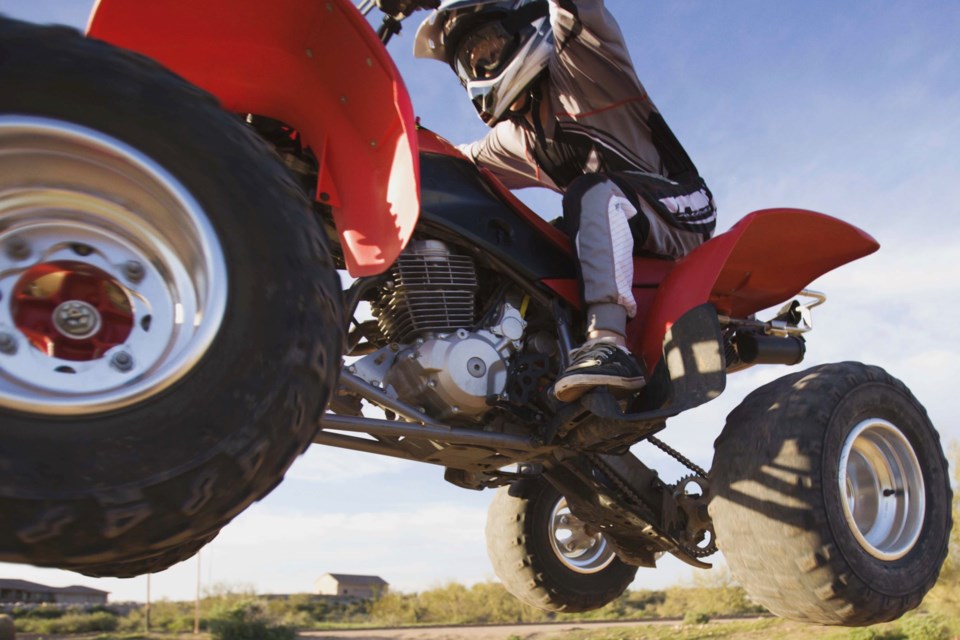ATHABASCA — As summer traffic in the area increases, Athabasca RCMP are reminding locals and summer visitors about best practices for using, storing, and protecting off-highway vehicles, ATVs, and small vehicle types such as scooters.
“As smaller, electric-powered vehicles become increasingly popular for commuting and recreation, it’s important for all road users to understand how these vehicles are classified and what rules apply to them,” wrote Const. Kyle Hotchkiss in an early July press release.
Riders of electric motorcycles and mopeds must stay off sidewalks and out of bike lanes. Operation is permitted on the far right of any road with the exception of making left turns, and drivers must have the applicable licence, registration and insurance.
Power-assist bikes or E-bikes can be ridden in bike lanes or on the far right of any road except for turns, and riders are not required to carry a license or any other documentation. Riders must be over the age of 12, and are mandated to wear motorcycle helmets when travelling.
Communities with ride-share electric scooters each have their own policies regarding operation, but personal e-scooters can only be used on private property in Alberta. While the Town of Athabasca doesn’t have a bylaw for electric scooter use, locals should use caution, common sense and respect when operating one.
Off-highway (OHV) and all-terrain vehicles (ATVs), including quads, dirt bikes, side-by-sides and more, are not allowed to operate on provincial highways, nor in ditches or right of ways along provincial highways.
Riders can traverse highways, roads, ditches, and right-of-ways in Athabasca County between 8 a.m. and 10 p.m., except in areas where operation has been marked as prohibited by signage. Groups must ride in a single file and in the direction of the closest traffic flow.
When travelling in ditches, hamlets, and residential areas, OHVs can travel up to 30 kilometres an hour, and up to 50km/hr on roadways.
The county does require operators to hold a Class 5 or greater licence; youth under 18 with a valid learner's permit can drive an OHV if they are accompanied by a licensed adult. OHVs must be registered and insured, with a licence plate and one working headlight and tail light visible.
Additional regulations around exhaust mufflers, licence, and towing requirements can be found in Athabasca County’s Off-Highway Vehicle Bylaw.
And in order to protect small vehicles and OHVs when not in use, Athabasca RCMP suggest implementing elements of Crime Prevention Through Environmental Design, or CPTED.
- Remove keys and store OHVs/small vehicles in a locked garage or secured shed if possible
- Develop a nightly routine to check locks and the security of important items
- Install motion-activated cameras and lighting to improve visibility and deter unwanted visitors
- Use interior light timers to give the impression someone is home, even when you are away
- Use anti-theft devices like steering wheel locks, trailer hitch locks, wheel locks or GPS trackers for recreational vehicles
- Mark your items with a permanent unique identifier like your driver’s licence number to aid in potential recovery
- Keep an inventory of recreational items including serial numbers, photos, and any identifying marks or features.
- Don’t leave tools, fuel, or equipment visible or unattended
- Report suspicious activity in your neighbourhood to the police



